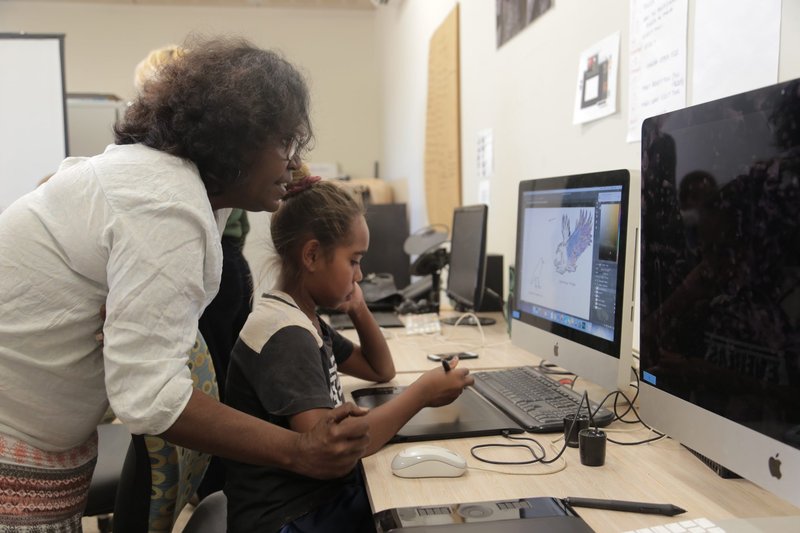Overview of NAVA’s Curriculum Consultation
Michelle and Cherry, NEO-Learning Digital Lab. Photo by Leith Alexander, 2019, courtesy of Big hART.
Michelle and Cherry, NEO-Learning Digital Lab. Photo by Leith Alexander, 2019, courtesy of Big hART.

The Australian Curriculum, Assessment and Reporting Authority’s (ACARA) proposed draft of the revised Australian Curriculum K-10 is currently open for public consultation until 8 July. NAVA is taking a leading role in coordinating a visual arts, craft and design response to the review.
With the support of April Phillips, Wiradjuri-Scottish visual artist, researcher and digital arts educator at Big hART, NAVA engaged the Art Gallery of South Australia’s Neo Ambassadors, a committee of young people aged 13 to 17 living in South Australia.
NAVA hosted an open Curriculum Consultation via Zoom for the visual arts and craft sector to discuss the changes, push for improvements and strategise on what’s needed to support teachers to deliver this ambitious framework. We were heartened by the level of enthusiasm, engagement and expertise of everyone who participated and thank everyone for their valuable contributions.
NAVA has prepared the following submission and summary of strengths and opportunities raised through NAVA’s consultations.
ACARA’s public consultation is open until 8 July 2021. NAVA encourages everyone to review the proposed curriculum documents and complete a short online survey to provide feedback.
This is an important opportunity for the visual arts, craft and design sector to make recommendations that build on the strengths of the current curriculum and improve how visual arts is represented. You are welcome to use NAVA’s responses to help guide your feedback. Download NAVA's 1 page summary below and please share with your networks.
Strengths<>
Opportunities
Thank you to the following teen AGSA Neo Ambassadors for your contributions to this research: Madeleine, Angelina, Montaigne, Abbey and Ezra.
In the two and a half years that I've been studying art at high school, we've only ever learned about white male artists, which is really sad because my school prides itself on diversity and yet they don't teach it, which is really crappy.
I felt like at school it was very much teaching you how to produce art, rather than teaching you the meaning of art. We don't really get taught about the culture, so I have to go and I guess, educate myself when I feel like it's something that I should know when I'm doing the art.
I've definitely learned more about the application of art outside of schools, especially how, I guess, curating works, how exhibiting works and how the actual art market works, whereas they don't teach you that in school I feel, and I think it's something that should be taught.
I think that it will be really good if the art curriculum imitated what practicing artists actually do a bit more, and we had more of a chance to talk through our ideas and develop a more resolved body of work and then have the opportunity to actually exhibit that in some capacity.
I think it would be good if we could learn more from local artists in our community and actually maybe have them come in, because then we'd have the opportunity to actually speak to them and find out more about their work. Although I did have the opportunity to watch a presentation by Stelarc, when he was in Adelaide last year, he came to our school and he talked to us about his work and that was very interesting.